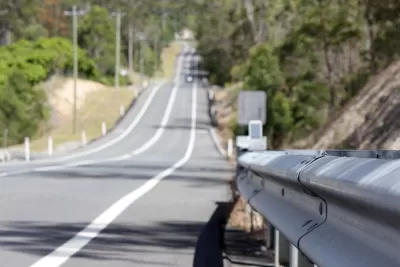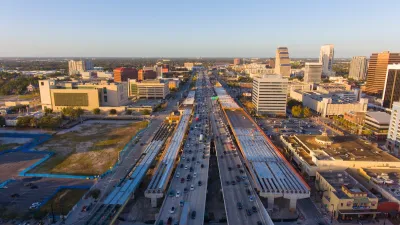As a number of Western States raise their speed limits, the costs of road maintenance, environmental damage, and lost lives keeps going up.

From Texas to Idaho, the speed limit on many rural roads and highways has jumped from 55 or 65 mph to 80 or 85 mph. Aarian Marshall reports in Wired that the increase in speed has led to consequences that can be measured monetarily or in lives lost.
A 2009 study published in the American Journal of Public Health estimates speed limit increases were responsible for 12,545 deaths and 36,583 injuries between 1995 and 2005. The number of rural interstate fatalities we can blame on higher speed limits jumped 9.1 percent during that time.
…
Faster driving means maintenance costs go up, too. In 2014, researchers working with Michigan’s DOT found that upping rural interstate speed limits from 70 to 80 mph would save 15.4 million passenger vehicle hours a year, but would also cost $163.88 million annually for the design’s estimated 25-year lifespan.
Marshall looks at the reasoning behind the support for higher speeds given the well documented costs. Some of the factors are cultural, others have to do with the politics of Western states, and then there's the great distances between places in rural America.
FULL STORY: Raising Speed Limits Is Irresponsible But States Keep Doing It Anyway

Alabama: Trump Terminates Settlements for Black Communities Harmed By Raw Sewage
Trump deemed the landmark civil rights agreement “illegal DEI and environmental justice policy.”

Study: Maui’s Plan to Convert Vacation Rentals to Long-Term Housing Could Cause Nearly $1 Billion Economic Loss
The plan would reduce visitor accommodation by 25% resulting in 1,900 jobs lost.

Planetizen Federal Action Tracker
A weekly monitor of how Trump’s orders and actions are impacting planners and planning in America.

Wind Energy on the Rise Despite Federal Policy Reversal
The Trump administration is revoking federal support for renewable energy, but demand for new projects continues unabated.

Passengers Flock to Caltrain After Electrification
The new electric trains are running faster and more reliably, leading to strong ridership growth on the Bay Area rail system.

Texas Churches Rally Behind ‘Yes in God’s Back Yard’ Legislation
Religious leaders want the state to reduce zoning regulations to streamline leasing church-owned land to housing developers.
Urban Design for Planners 1: Software Tools
This six-course series explores essential urban design concepts using open source software and equips planners with the tools they need to participate fully in the urban design process.
Planning for Universal Design
Learn the tools for implementing Universal Design in planning regulations.
Caltrans
Smith Gee Studio
Institute for Housing and Urban Development Studies (IHS)
City of Grandview
Harvard GSD Executive Education
Toledo-Lucas County Plan Commissions
Salt Lake City
NYU Wagner Graduate School of Public Service




























